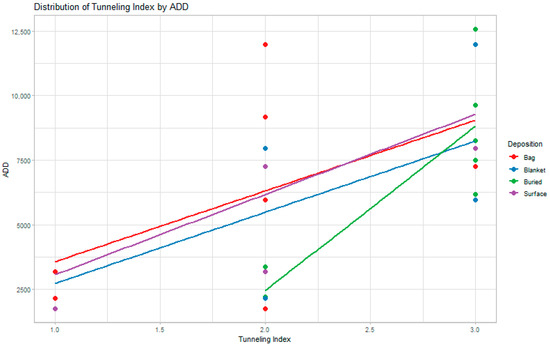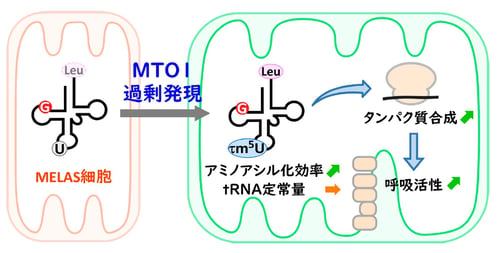2023-03-16 カリフォルニア大学サンディエゴ校(UCSD)
カリフォルニア大学サンディエゴ医学部のDon Cleveland教授らの研究グループは、この問題を修正するDNA薬剤の開発に成功し、マウス実験で正常なstathmin-2レベルを回復させた。これにより、ALS患者においてstathmin-2タンパク質のレベルを維持し、麻痺を遅延させる臨床試験を開始する基盤が築かれた。
これらの研究は、神経変性疾患やがんなどの治療において遺伝子をオン・オフできるDNA薬剤の概念を開発したCleveland教授らの研究の一環である。
<関連情報>
- https://today.ucsd.edu/story/dna-treatment-could-delay-paralysis-that-strikes-nearly-all-patients-with-als
- https://www.science.org/doi/10.1126/science.abq5622
TDP-43タンパク症におけるSTMN2暗号スプライス・ポリアデニル化のメカニズムとその補正について Mechanism of STMN2 cryptic splice-polyadenylation and its correction for TDP-43 proteinopathies
Michael W. Baughn,Ze’ev Melamed ,Jone López-Erauskin,Melinda S. Beccari,Karen Ling ,Aamir Zuberi,Maximilliano Presa,Elena Gonzalo-Gil,Roy Maimon,Sonia Vazquez-Sanchez,Som Chaturvedi,Mariana Bravo-Hernández,Vanessa Taupin,Stephen Moore,Jonathan W. Artates,Eitan Acks,I. Sandra Ndayambaje ,Ana R. Agra de Almeida Quadros ,Paayman Jafar-nejad ,Frank Rigo,C. Frank Bennett ,Cathleen Lutz,Clotilde Lagier-Tourenne,Don W. Cleveland
Science Published:16 Mar 2023
DOI:https://doi.org/10.1126/science.abq5622

Rescue from TDP-43 proteinopathies
Loss of the RNA-binding protein TDP-43 from the nuclei of affected neurons is a hallmark of neurodegeneration in TDP-43 proteinopathies, including amyotrophic lateral sclerosis and frontotemporal dementia. The RNA most affected by reduced TDP-43, STMN2, encodes stathmin-2, a protein required for axonal regeneration after injury. Baughn et al. found that TDP-43 sterically blocks recognition of a cryptic splice site in STMN2 pre-mRNA (see the Perspective by O’Brien and Mizielinska). The CRISPR effector dCasRx or antisense oligonucleotides could block STMN2 pre-mRNA cryptic splicing. This approach was able to rescue stathmin-2 levels in TDP-43–deficient human motor neurons and mouse genes edited to contain human STMN2 cryptic splice/polyadenylation sequences. —SMH
Structured Abstract
INTRODUCTION
Nuclear clearance and cytoplasmic aggregation of the RNA-binding protein TDP-43 is the hallmark of neurodegenerative diseases called TDP-43 proteinopathies. This includes almost all instances of amyotrophic lateral sclerosis (ALS) and about half of frontotemporal dementia. In ALS, the motor neurons that innervate and trigger contraction of skeletal muscles degenerate, resulting in paralysis. One of the most highly abundant motor neuron mRNAs encodes stathmin-2, a protein necessary for axonal regeneration and maintenance of neuromuscular junctions (NMJs). Loss of functional TDP-43 is accompanied by misprocessing of the STMN2 RNA precursor, which is driven by use of cryptic splicing and polyadenylation sites, and producing a truncated RNA that encodes a nonfunctional stathmin-2 fragment.
RATIONALE
Recognizing that stathmin-2 is essential for axonal recovery after injury and NMJ maintenance, a central interest in TDP-43 proteinopathies is to determine the mechanism through which TDP-43 enables correct processing of STMN2 mRNAs and to develop methods to restore stathmin-2 synthesis in neurons with TDP-43 dysfunction.
RESULTS
We found that TDP-43 binding to a 24-base, GU-rich motif within the first intron of the STMN2 pre-mRNA was required to suppress cryptic splicing and polyadenylation. Conversion of this GU-rich binding motif into a 19-base sequence bound by the MS2 bacteriophage coat protein (MCP) ablated TDP-43 binding and produced constitutive misprocessing of STMN2. Correct processing of this modified STMN2 pre-mRNA was restored by binding of MCP, suggesting that TDP-43 normally functions by sterically blocking access to the cryptic sites of RNA-processing factors. Further genome editing revealed that the cryptic 3′ splice acceptor, not the cryptic polyadenylation site, was essential for initiating STMN2 pre-mRNA misprocessing.
Rescue of stathmin-2 expression and axonal regeneration after injury in human motor neurons depleted of TDP-43 was achieved with steric binding antisense oligonucleotides (ASOs). Humanization (by insertion of the human STMN2 cryptic exon) sensitized mouse Stmn2 to TDP-43 expression level. Mice alternately humanized with the cryptic exon containing a disrupted TDP-43 binding site produced chronic Stmn2 pre-mRNA misprocessing independent of TDP-43 level. ASOs were identified that when injected into cerebral spinal fluid of mice with constitutive humanized Stmn2 RNA misprocessing, restored stathmin-2 mRNA and protein levels.
CONCLUSION
We determined that TDP-43 binding in the first intron of the STMN2 pre-mRNA sterically blocked access of RNA processing factors that would otherwise recognize and use a cryptic 3′ splice site. We identified RNA-targeted CRISPR effectors and ASOs that restored STMN2 levels despite reduced TDP-43. ASO injection into cerebral spinal fluid, an approach feasible for human therapy, rescued stathmin-2 protein levels in the central nervous system of mice with chronically misprocessed Stmn2 pre-mRNAs.


